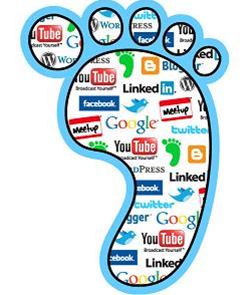The Shocking Way You Are Alienating Your Customers
Have you ever been a loyal customer? Sure you have. Have you ever been put off by something by something that the brand you have been so loyal to has done? Of course you have. Sometimes it is something so innocent that they that don’t even know that they have done it. Nonetheless, while innocent, it is a shocking way to alienate customers.
This past weekend I was flipping through one of my favourite magazines “House and Home” when I came across an article, and specifically the image to introduce the piece, that just stopped me in my tracks. But let me back up a bit before sharing with you my gut reaction to what I was seeing. I love House and Home for its simply beautiful pictures and stories about homes with good design. They are wonderful at curating a story and helping people visualize what is possible within their own homes. Page after page is a visual delight of gorgeous places decorated in a simply stunning way.
The magazine has wonderful pictures of beautiful, and most often, very expensive homes, cottages and cabins. Gorgeous! A lot of these featured abodes are located in Ontario, Quebec and the Western Provinces of Canada. Hopefully, I have painted a picture for you. Occasionally they will feature a location in Atlantic Canada, but not very often. In fact, they do feature a Nova Scotia home in this very feature…but and there is a big but here…and this is where I feel that they failed and did somewhat alienate me, and I am sure others. They succumbed to stereotyping. Yes..yes they did. The article which was focusing on seafood, certainly stereotyped Atlantic Canadians, and particularly fishermen as living in much, much, much more humble abodes than our neighbours to the west of us. While I did not grow up in a family of fishermen, I did get to meet and know a few over the years and none lived in a house remotely close to what was pictured.
But here is really the crux of the matter, stereotyping is dangerous in marketing/selling. It is a very easy way to alienate your customers and your prospects. I know that, in this case, they were attempting to paint this quaint lifestyle, but it is not accurate. It was innocent enough, but it does demonstrate that the editors likely have a picture of what most Atlantic Canadians do and how we live. Now, they might not be impacted by this at all since they also featured another piece on a lovely Nova Scotia property, but not all businesses would be this lucky.
Depending on your business, you might not even realize that you have alienated people. You just might notice that some customers have retreated. For a restaurant, coffee shop or another such business where you get to know your regulars, you would actually notice that some customers have disappeared; but for utilities, magazines, airlines, etc. you likely wouldn’t notice. Depending on how serious the alienation is, it could really hurt your bottom line. It is very easy for stereotyping to become a social media crisis, which impacts your reputation and trust that you have built. A brand can take a real hit when this occurs.
Key takeaway: This one is such an easy fix. Throw out stereotypes. The risk is just too high.
If you like this post, feel free to connect on Twitter: @MacLeanHeather



